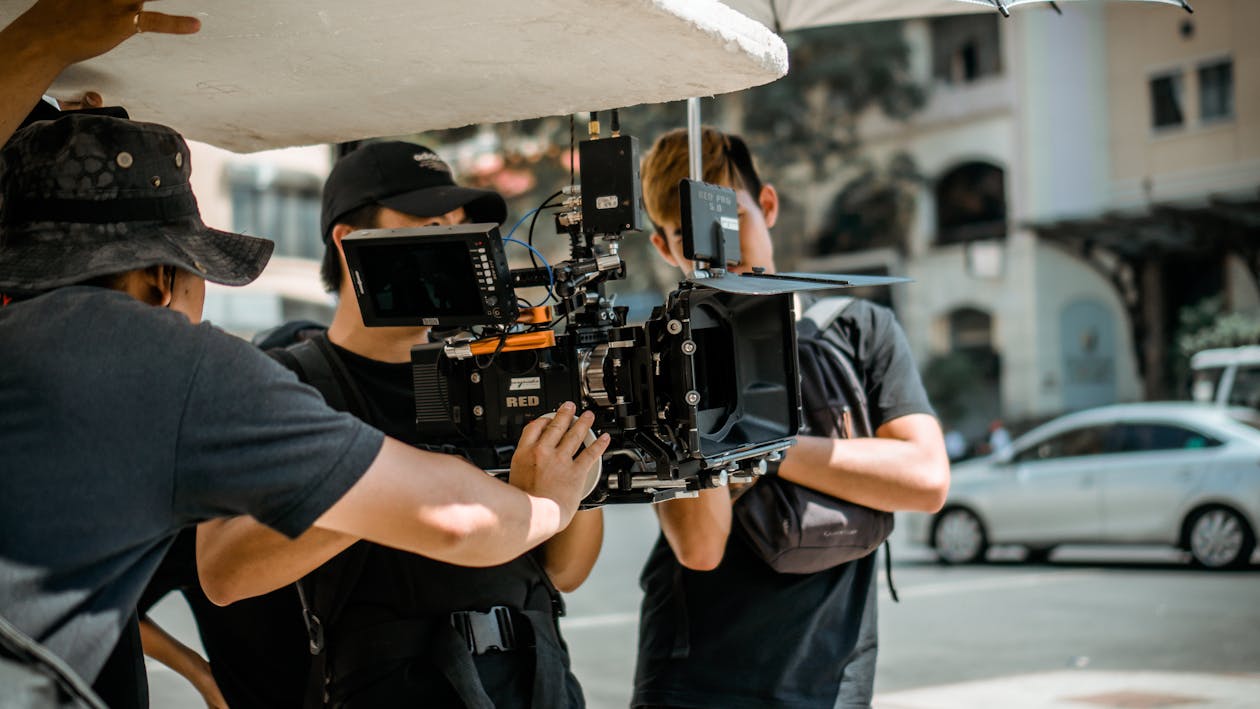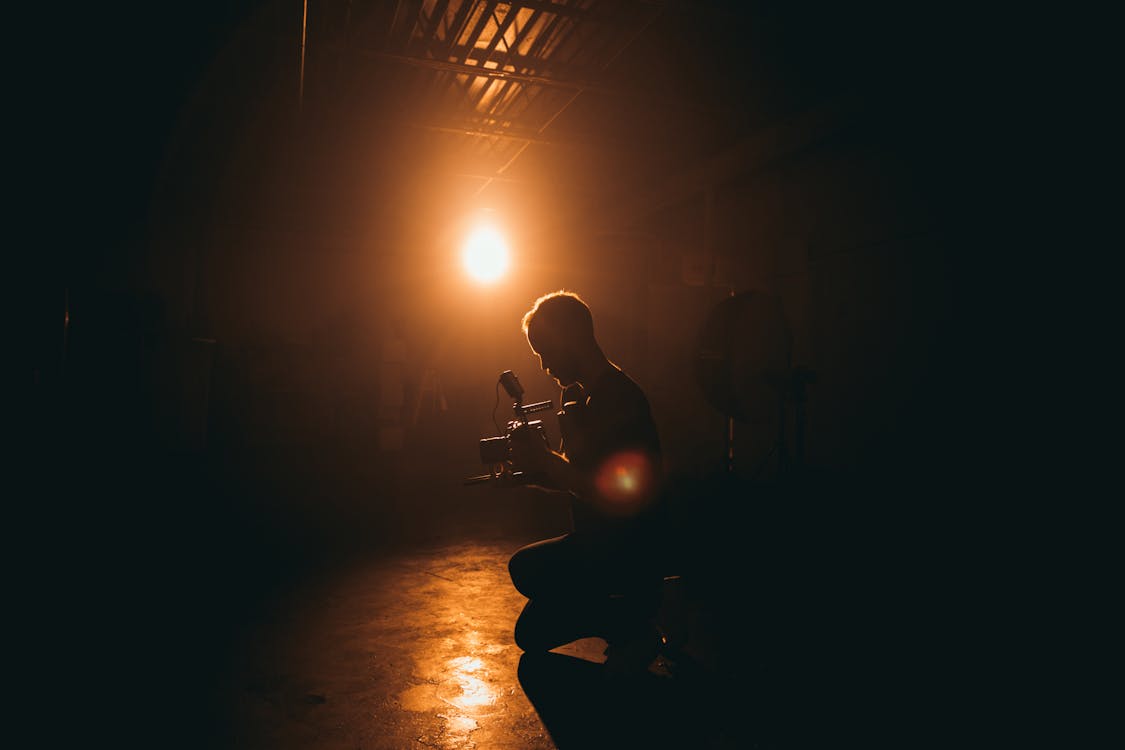
We recently had a chance to witness the alchemy used on the set of Dune 2, where Fraser used the infrared on the camera’s sensors, which can cut through the visible light. That was made possible with the ultra-modern Alexa mini LF.
The most prevalent headache for many freelance filmmakers, whether students relying on resources like royalwriter.co.uk, or pros, is the price of movie-making gear. The list of matching gear is working against them as well. A tripod, lenses, lights, camera, and stabilizer should all be fitting, and there should be an array of minor amenities.
It becomes easy to break your bank without completing a full and functional setup. Therefore, how do you wade through these muddy waters to kick-start your career?
Why Invest in Filmmaking Equipment?

You should invest in equipment to stand out from your competitors and advance your career as a sign of commitment to your filmmaking career. As a motivated filmmaker, here’s why you should incur equipment costs:
Getting the Perfect Shot
The worst gear is shooting with your hands which delivers shaky and not professional shots. But when you make the right investment like a tripod or lens, they get that much more and better shots. In professional recordings with panning and rotation there will be always a certain stabilization gear like Steadicams for example to guarantee the smooth moving and keeping shots steady.
High Production Value
Advanced gear allows users to create engaging and alluring output for audiences. High-tech cameras capture detailed and crisp images that encapsulate human emotions in character. The end product can be added to your professional portfolio.
Time and Resource Management
A well-executed production workflow saves time and funds by ensuring projects are completed on time and within the stipulated budget, similar to how a college essay writing service functions. Investing in good cameras and stabilizers means getting clear images that reduce time spent on post-production. Moreover, investing in the right editing software means a sped-up post-production process to deliver quality output.
How to Get Started
The right gear can boost your production value and advertise your work to potential investors or distributors. But what does your gear consist of:
High-Quality Cameras
The latest advancements in phone technology have released some strong mobile cameras. For example, the iPhone 15 Pro has a massive video production output with its Apple ProRes video in Log color profile with 4k resolution.
However, these models can’t outperform professional filmmaking cameras. For instance, if a 90s filming camera used film, the output would be better than a phone camera’s. Filmmakers can easily enlarge the output to 8k without any pixels appearing.
In addition, modern mirrorless and DSLR cameras offer filmmakers complete manual control over basic settings such as aperture, ISO, speed, and shutter, among many others.
Different features come into play when evaluating the best cameras, including:
- Resolution: What quality specs do you expect from your films? Is it 4k or 8k? Confirm these specs before purchasing your preferred camera.
- Frame rate: The common rate for cinematic TV and television is 24fps. This is determined by the minimum speed needed to capture video and maintain realistic motion.
- Sensor size: A professional sensor size developed for more than photography is around a Super 35 frame. A big sensor offers crisp image quality and low-light performance.
- Budget: Different brands fetch different prices for consideration. Don’t fall for the marketing hype and research individual features within your budget range.
- Lenses: These lenses vary focal lengths that control magnification and field of view. A good lens should master scenes of a whole scene or get in close and work in cramped spaces.
Lighting Gear
Lighting has incredible power in curating a movie’s visual narrative. Good lighting enlivens scenes and elevates mood while revealing character traits and narrative themes. What makes a good lighting setup?
- Lighting kit: A lighting kit is usually very flexible, making it easy to arrange suitable lighting. The kit has different lights, such as tungsten, HMI, fluorescent video, and LED lights.
- Reflector: Reflectors ensure that the light from the source is controlled as intended by the user. A reflector has a reflective material within it that shapes the light.
- Lighting stands: Filmmaking light stands support custom lighting to make films look real. The most common lighting stands are general-purpose stands and C-stands.
- Light dome: These provide a powerful and even illumination of the object to be viewed. It is made of complex reflective objects that illuminate and soften the light in all directions.
Additionally, there are inevitable elements to think about during purchase period like:
-
- Intensity of Light: Lighting is a huge influence over the mood and feel in a film. With reduced intensity, color and direction changes have varying emotional effects.
- Light Quality: The perfect shot is not too dark or too bright glare without the glare backwash intensity rebroadcasting and underwear with lighting kit allows for a uniform.
- Lightweight: gear is light to transport, use in changes of locations etc.
- Budgeting and cost: lighting kits fall under basic, medium, and expensive. A rule of thumb is to only operate equipment with a price tag within your budgetary estimates while keeping a professional outcome in your domain.
Lenses
Investing in high-quality lenses allows audiences to view your story through your eyes. Any sudden change or shift can paint a different mood and perspective. A good director should settle on a specific lens for the output.
Here are considerations when purchasing:
-
-
- Aperture: All senses come with the maximum aperture stated. It indicates the amount of light that passes through the lens to access the sensor. A big aperture allows much light, which leads to low-light performance. A small aperture doesn’t work well with low lighting, which results in field depth and sharp focus.
- Focal length: The lens’ focal length determines the angle view. A narrow-angle view means a high lens magnification, whereas a lower focal length means a wide-angle view.
- Autofocus: An autofocus lens means the autofocus motor enables the camera to focus automatically on the main subject. This comes in handy when shooting scenes with the subject in motion.
-
Final Takeaway
While these instruments are vital for any filming production, there’s much more to go deep into your pocket to fund the entire production. Evolving technologies are releasing state-of-the-art production tools in the market. Therefore, keep up with the latest trends to find tools that work for you.

